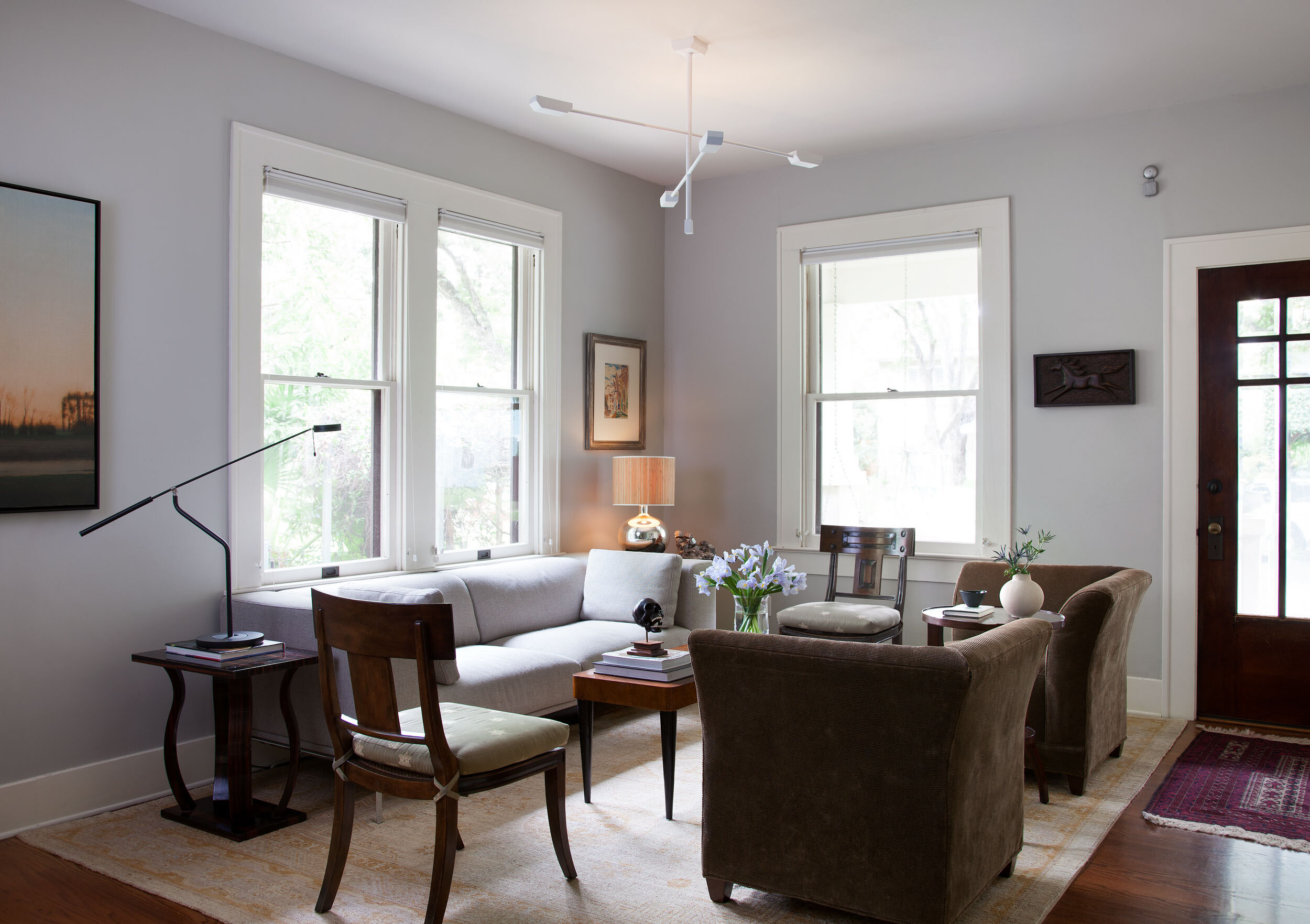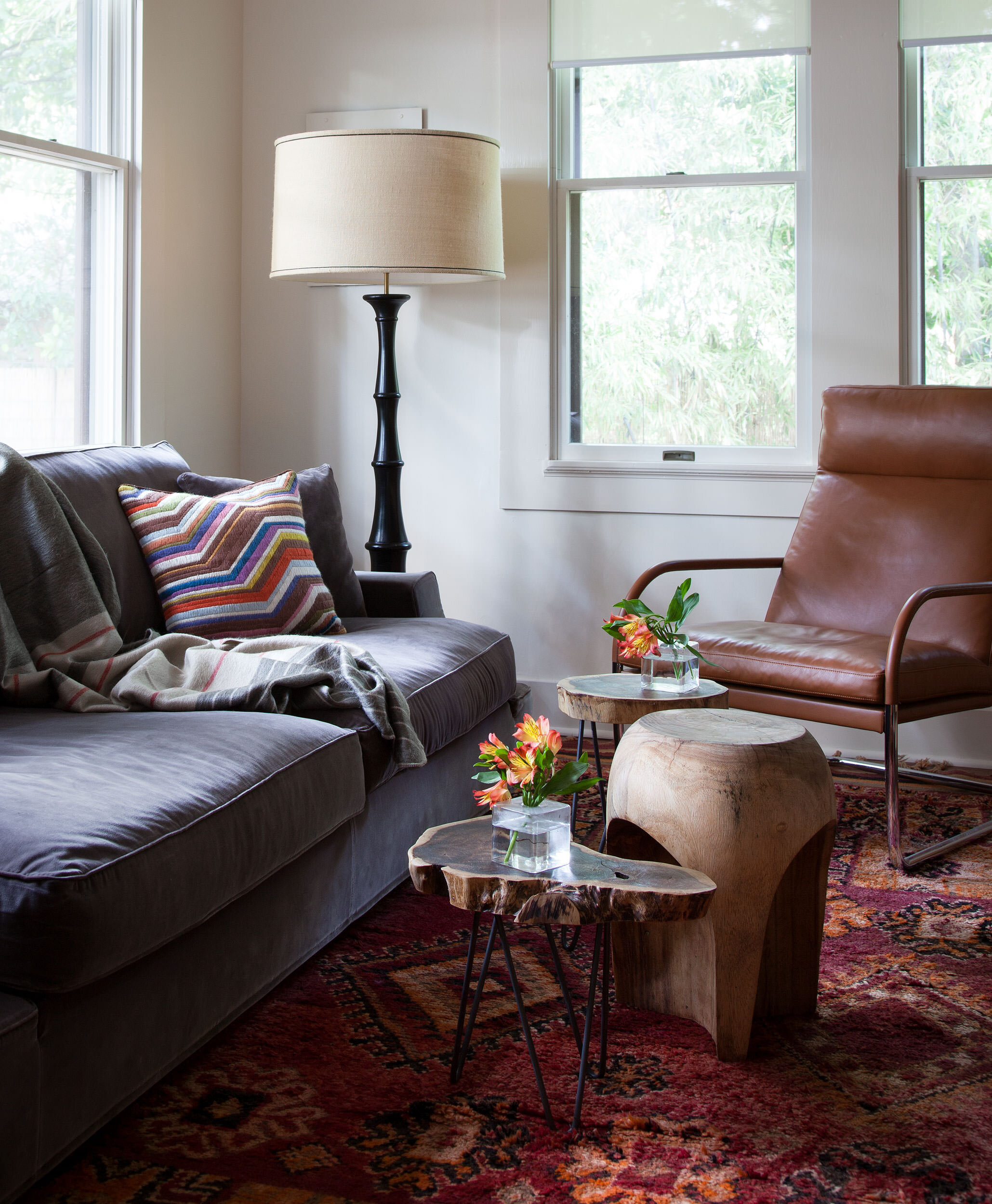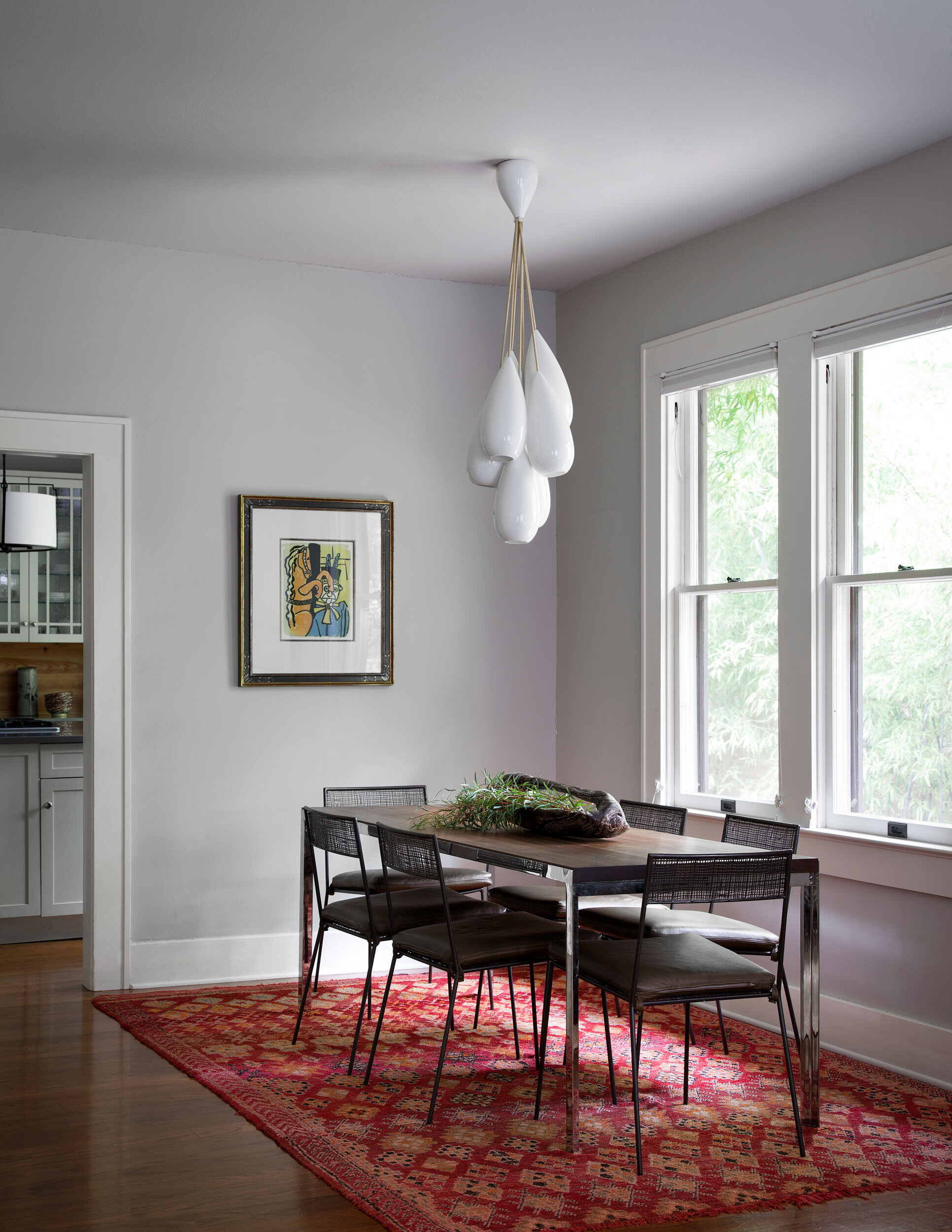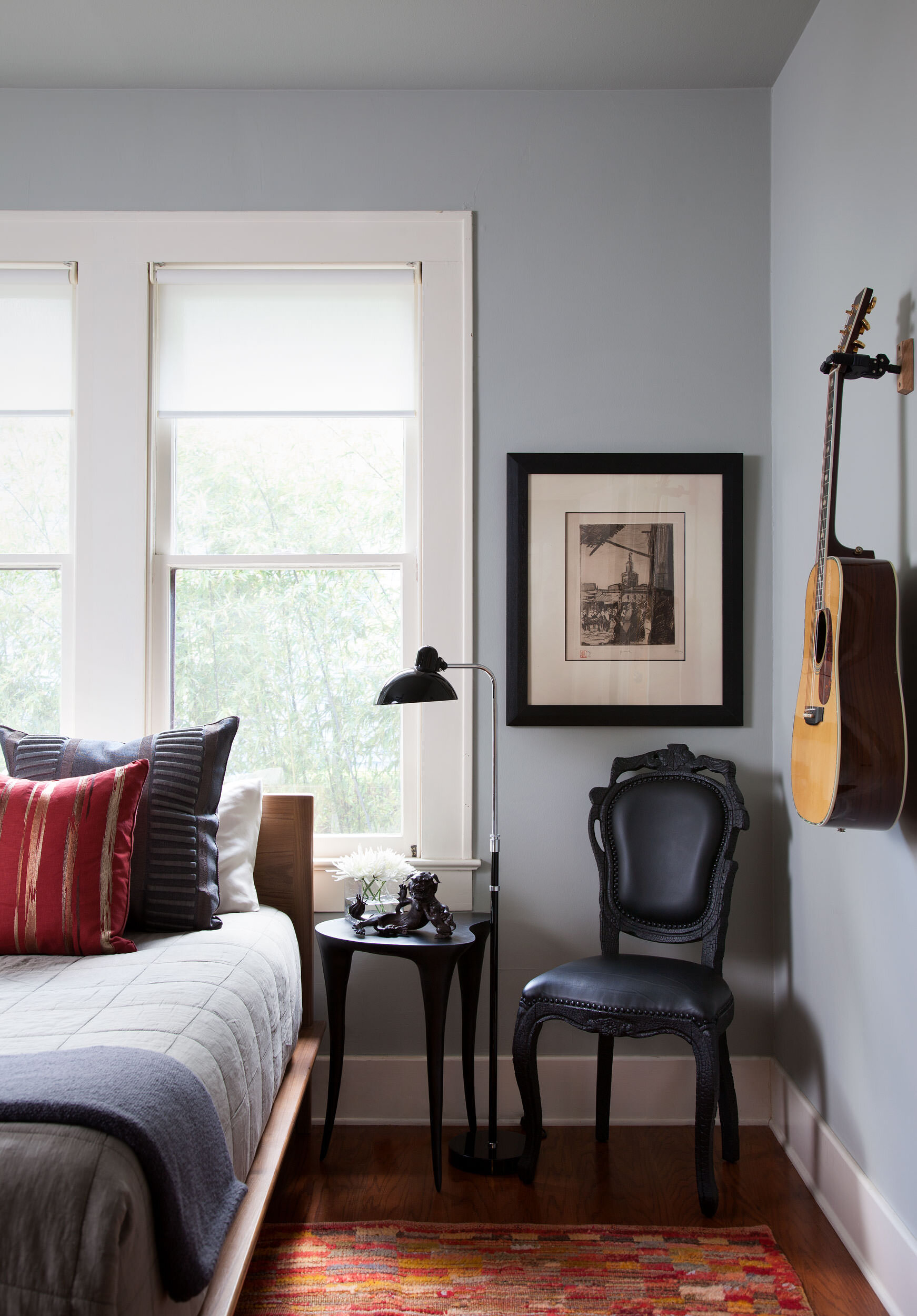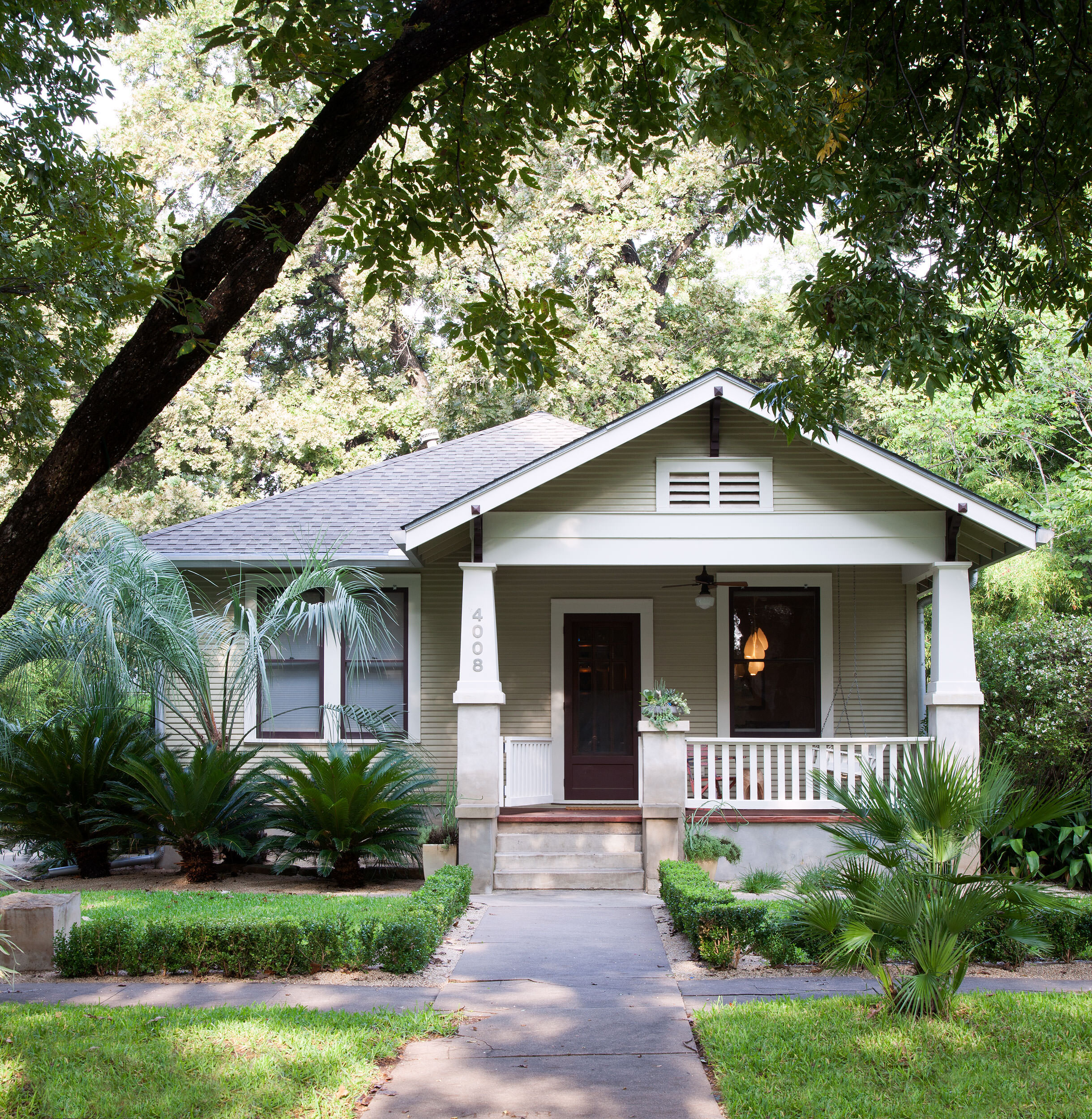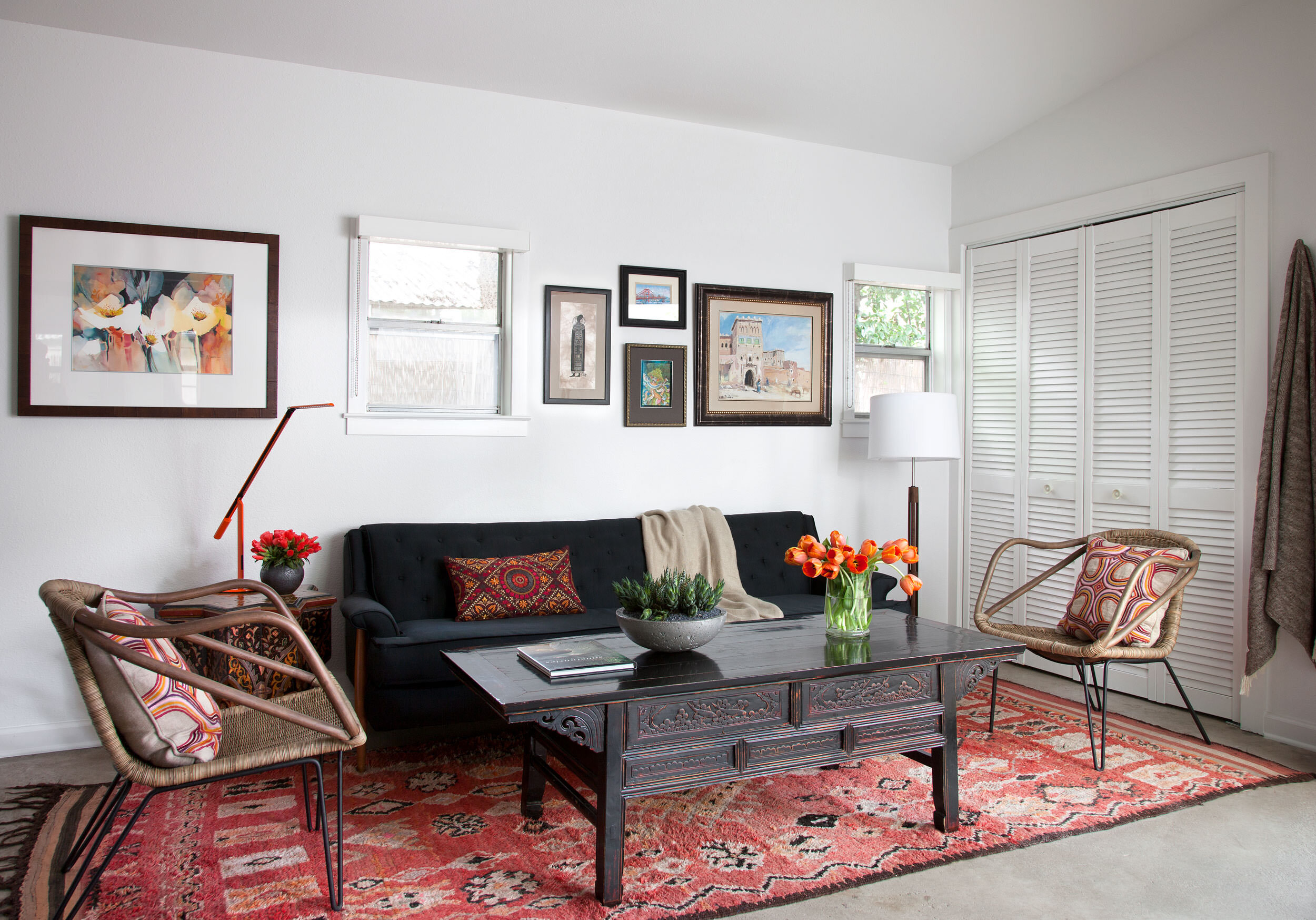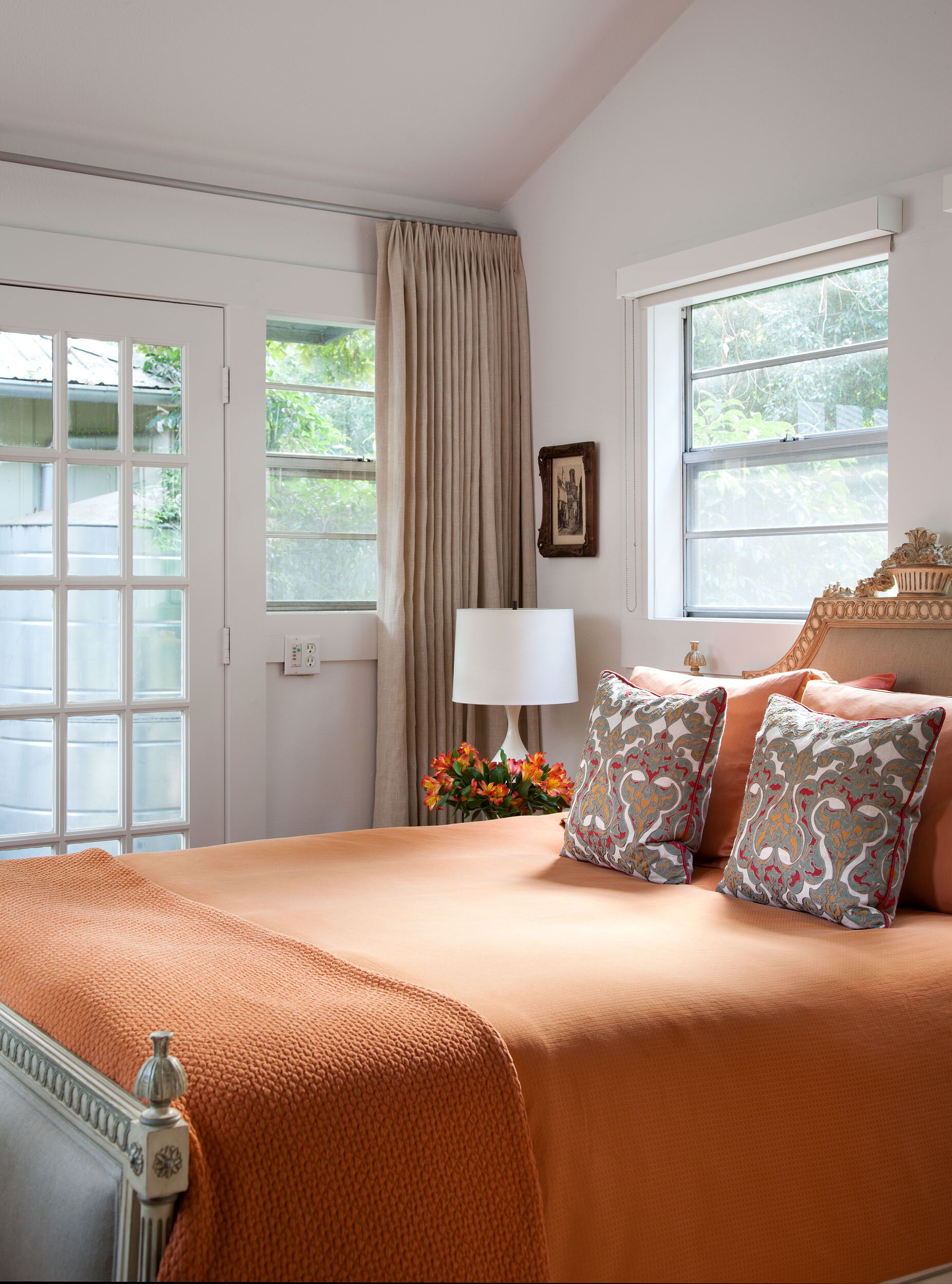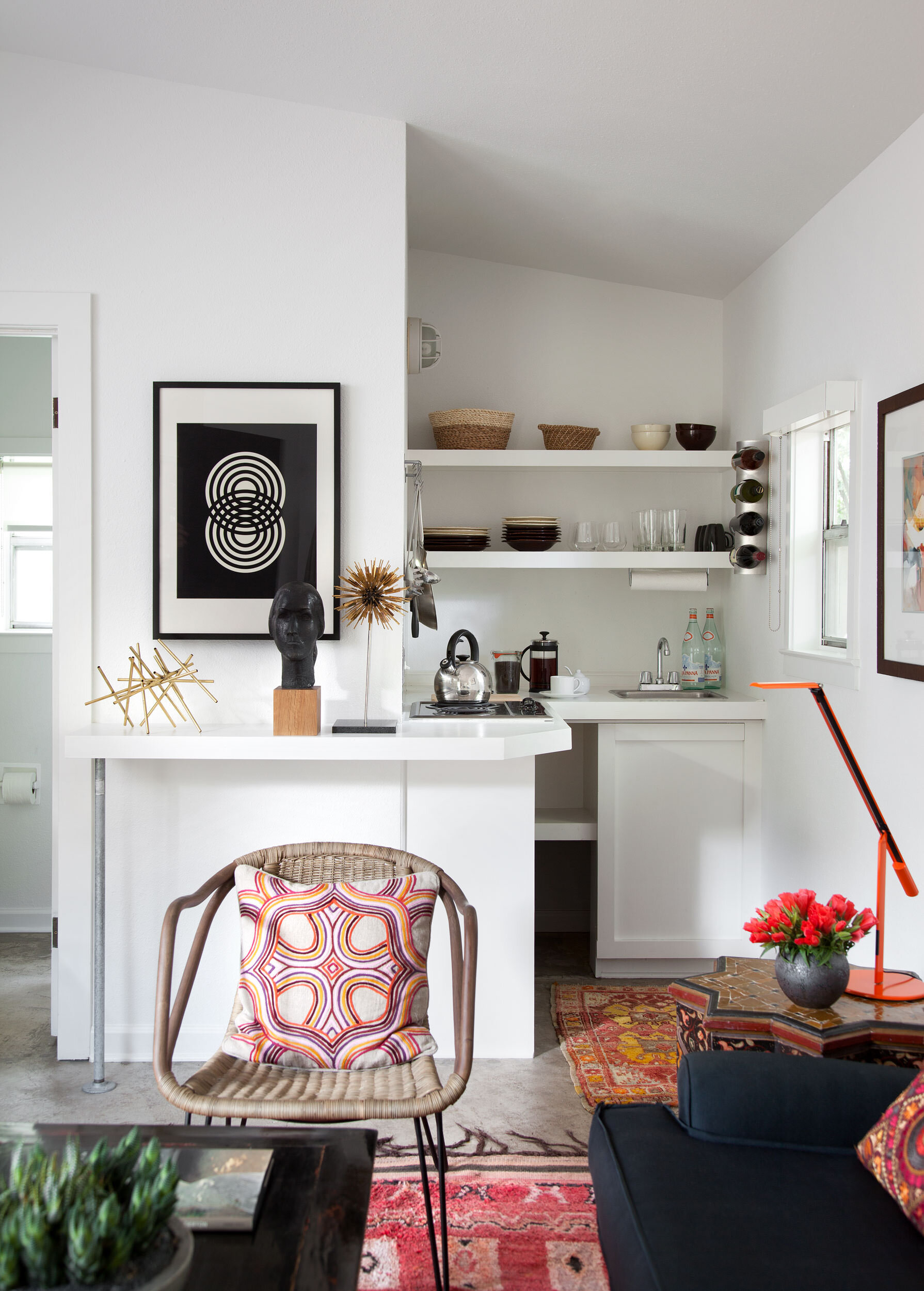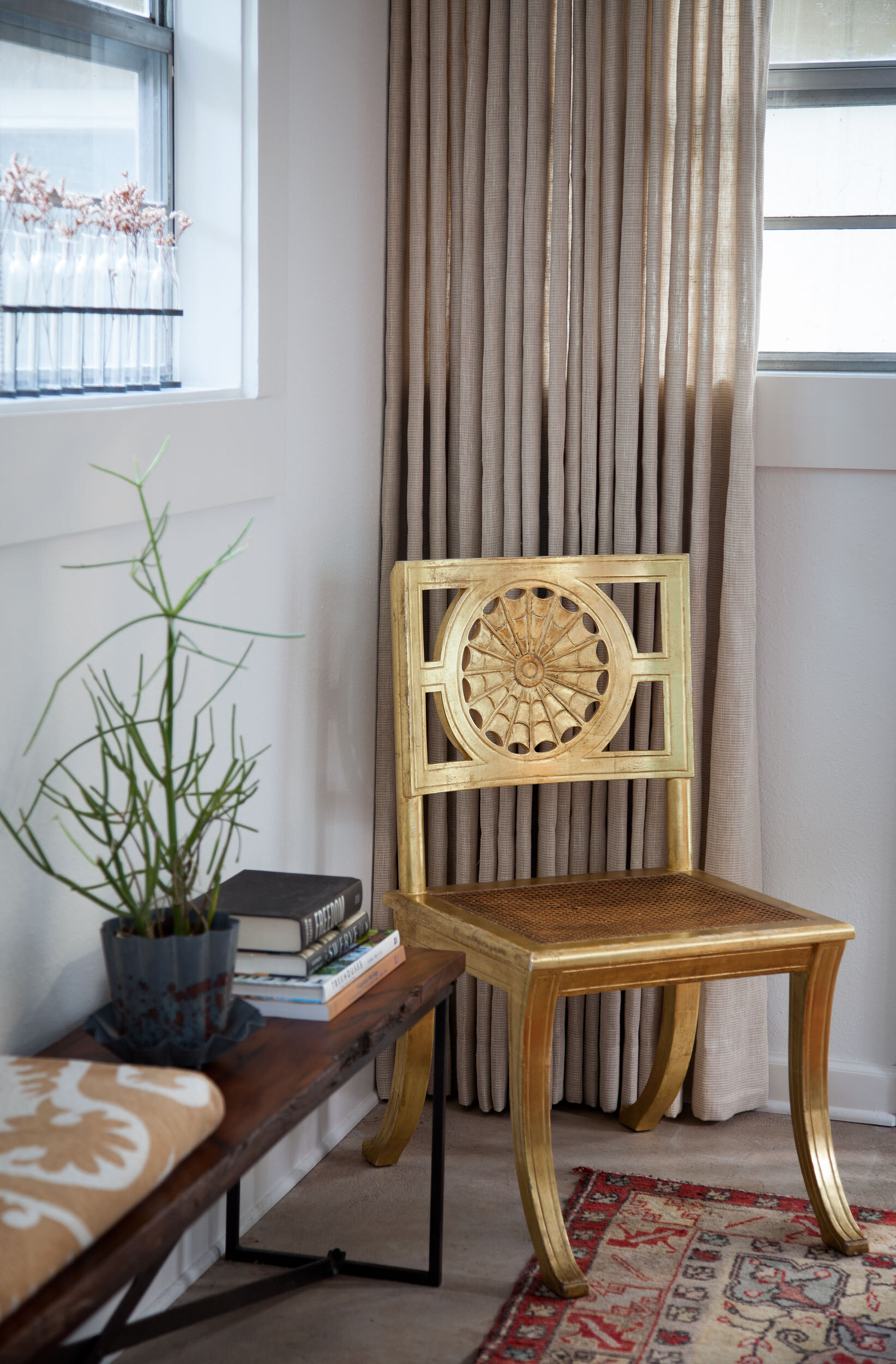Austin Monthly
The Non-Glass House
Photography: Ryann Ford | Original Article
In an ideal world, decorating a home would be as easy as choosing favorite pieces and installing them. In the real world, of course, decorating is much more complicated.
In 2012, interior designer Mark Cravotta faced that dilemma when moving into a Hyde Park home with his wife, Monica, and their two young daughters. The 1,600-square-foot structure built in 1922 had modest dimensions and needed petite furnishings. Cravotta, meanwhile, had furniture from old projects that he was desperate to use.
Two other factors needed to be considered: Aesthetics-wise, he prefers the clean lines of modernist design while his wife is a firm traditionalist. And the daughters, now 5 and 7 years old, are not yet past the jumping-on-the-furniture stage.
But the man behind Cravotta Interiors navigated the challenge with aplomb, blending antique, modern and low-maintenance decor to create a comfortable, make-everyone-happy family home. “It’s really striking that balance,” Cravotta says. “I want our home to be livable, pleasing aesthetically, but not overly precious. We have a no-standing-on-the-furniture policy, which our kids don’t abide by all that often.”
When the Cravottas first saw the bungalow-style house two years ago, they found compelling reasons to make an offer (which they did three hours after it came on the market). There were the neighborhood’s glorious bur oak trees, which included Austin’s oldest and largest specimen growing right in the property’s backyard. There was the 600-square-foot casita behind the main house that would be perfect for putting up family and friends. And there was the home itself, which had been exquisitely maintained by its former design-loving owner, a grandniece of famed mid-century modern furniture maker George Nakashima.
“When we inspected this house it was filled with his furniture,” recalls Cravotta. Even Monica, who usually takes a more nonchalant approach to furnishings, was smitten. “She wanted to know if the homeowners would sell the house with some pieces,” he says. “I had to tell her that this was Nakashima furniture and probably costs more than the house.”
While the heirloom furniture didn’t stay, the Cravottas had on their hands a vintage stunner in excellent condition. To enhance the already kid-friendly kitchen—which boasted an entire wall playfully painted with blackboard paint—Cravotta extended the island’s Caesarstone countertop to create counter seating so the girls could have somewhere to sit when meals were being prepared.
Other factors were at play in decorating, too. “When my wife and I first met, her ideal was probably a little clapboard house in the mountains with lace curtains, whereas mine was Philip Johnson’s Glass House,” he says. “So we had to bring those ideals together.”
To achieve a happy medium, Cravotta boldly juxtaposed old and new, like in the living room where a pair of Klismos-style chairs mingles with a modernist Italian sofa upholstered in cool gray linen. Where necessary, he also added pieces—like a slim, 29½-inch-wide rectangular dining table—bought specifically to fit the home’s relatively small proportions.
Peppering this mélange are exotic finds from the designer’s travels, with a highlight being a 19th-century Berber necklace from Morocco. Cravotta, a former jewelry designer, devised a clever method of mounting the coral-and-silver piece in a shadow box in the living room so it can be enjoyed as artwork and be easily accessed by Monica for wearing on rare, special occasions.
This function-meets-art philosophy is threaded throughout the home. The girls’ soft pink bedroom, for example, is accented by a fuchsia rug from Marrakech that’s more than 100 years old. “I grew up in a house filled with beautiful things, which were all to be used and touched,” Cravotta says. He adopted his parents’ philosophy in his home.
Still, the designer hints that the future holds change. “There may be a time later when the kids are older, or gone off to college, when we might step things up,” he says. “And who knows, I might even have my ultramodern house some day.”

